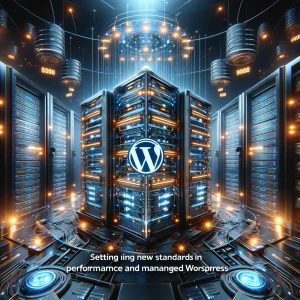 In the early days of the Internet the information superhighway was more of a street, and the world wide web wasn’t catering to business interests to nearly the same extent that it does now. That was to be expected, but the extent to which it’s become necessary for even smaller businesses and ventures to have at least some type of online presence wasn’t. Part of the reason all of them do now is because it’s easy and those folks are just as increasingly digital as you are.
In the early days of the Internet the information superhighway was more of a street, and the world wide web wasn’t catering to business interests to nearly the same extent that it does now. That was to be expected, but the extent to which it’s become necessary for even smaller businesses and ventures to have at least some type of online presence wasn’t. Part of the reason all of them do now is because it’s easy and those folks are just as increasingly digital as you are.
It may also be surprising to find out just how many others are in the same business you are, and here in North America that’s a reflection of popular growth and what would ideally be a more stimulated economy. Prospective customers find your business online, but they can find your competitors just as easily and that’s true for web hosting or website design or anything else where someone’s online store or portal is a primary means of doing business. That’s the basic premise of why search engine optimization is as important as it is for an ecommerce website now.
Website optimization can be a very broad term, but if you’re looking at it strictly from having solid SERPs and site visitor retention then everything that comes with standard SEO is also influenced significantly by website performance and site speed. Remember that it’s been established that it should never take more than 2 seconds for a page loading and more than 3 is when you have them entering bounce rate territory.
There’s a lot more that goes into site performance too, and with cPanel here at 4GoodHosting you can manage your website with Toronto website design as an alternative for a more detailed and dynamic site if having one suits your business well. 4GoodHosting has the best VPS hosting rates in Canada for sites that are expecting to see traffic spikes, and of course you want to see large numbers of people visiting your site.
So what we’ll do with this entry here is talk about how those three interests come together as the place where the primary focus should be for anyone who is working to improve their SEO plus do what it takes to have improved functionality and performance for the site.
Up Page Speed, Up SEO
Website speed has a considerable sway on user experience. Apparently 47% of consumers expect a website to load in 2 seconds or less, and that for every second of delay beyond that, there is a 16% drop in page views. Slow websites also have a negative impact on SEO and site speed is well known to be one of the factors that go into how websites ranking in search engine results pages. A slow loading site will frustrate users and when they ‘bounce’ often your rankings are going to suffer.
Website optimization then becomes an essential practice for enhancing the speed, performance, and SEO of your website. With an optimized website you improve user experience, increase search engine rankings, and enjoy having more traffic driven to your site and then enjoying the benefits of solid website design that’s delivered a website that is optimized for user experience.
Defining Website Optimization
Website optimization involves making necessary adjustments and improvements to various aspects of your website to ensure best performance. This optimization process includes enhancing website speed, improving performance, and implementing SEO best practices. An optimized website provides a seamless user experience, attracts visitors, and promotes better visibility in search engine results.
It’s a good idea to analyze your website speed using tools like PageSpeed Insights or GTmetrix. These tools provide valuable insights into the factors that affect your website’s loading time and give recommendations on how to improve them.
Another important point is to be minimizing the number of HTTP requests that are made by the website. This is done by reducing the number of files your site loads and most commonly done by combining and minifying CSS and JavaScript files, and removing unnecessary plugins or scripts that contribute to excessive requests.
Compression and caching is important too, and it’s especially good to enable gzip compression, which compresses your website files in advance of being sent to the user’s browser so that file sizes are greatly reduce and loading speeds are improved. It’s also standard to implement caching mechanisms to store static files on the user’s device, bypassing the need to fetch them from the server upon each visit.
Optimizing Site Structure
It’s also very beneficial to see to it your website has a clear and logical structure, as this makes it easy for users and search engines to navigate. Use descriptive and SEO-friendly URLs, organize content into relevant categories and subcategories, and put breadcrumbs in place for easier navigation. Next up is to minimize the number of broken links and redirects that you have, as they can negatively impact speed and user experience. Regularly check for and fix broken links to prevent users from getting a 404 errors message display and here’s what else you need to do:
- Implement 301 Redirects -It’s important to properly redirect the old URLs to the new ones when you make changes to your website structure or URLs. Use 301 redirects to ensure search engines and users are directed to the new location seamlessly. Be sure to update any internal links or external resources pointing to the old URLs as well.
- Monitor Broken Links – Even after fixing broken links, it’s essential to monitor your website regularly for any new broken links. Regularly crawl your website and set up automated alerts or notifications to quickly identify and rectify any broken links that may occur. This proactive approach will help maintain a smooth user experience and prevent any negative impact on your SEO.
By minimizing redirects and fixing broken links, you improve website performance, provide a better user experience, and enhance your SEO efforts.
You can audit your website for any unnecessary redirects by identifying any redirect chains or multiple redirects that can be consolidated into a single redirect. By removing unnecessary redirects, you can take the loading speed and efficiency of your website and make it a lot better.
You’ll also want to optimize your images as large image files can substantially slow down your website. Optimize your images by compressing them without compromising quality. And formats like JPEG or WEBP tend to be better than PNGs. Another thing you can do is called ‘lazy loading’. Lazy loading ensures that images are only loaded when the user scrolls to their view, reducing the initial page load time.
This technique is especially useful for websites with multiple images, image galleries, or long-scrolling pages.
Then when this is paired with Gzip compression that greatly reduces the size of your HTML, CSS, and JavaScript files, you will have faster page load times plus improved general site performance. Then with browser caching enabled repeat visitors will load your website faster due to having stored certain resources on their devices.
Optimizing your website for speed is crucial for providing a seamless user experience and improving your search engine rankings. By analyzing speed performance, optimizing images, reducing HTTP requests, and utilizing compression and caching techniques, you can significantly enhance your website’s loading time and overall performance.
Downing HTTP Requests
Fortunately it’s pretty straightforward to reduce HTTP requests. Here’s how:
- Combine and Minify Files – Combining multiple CSS or JavaScript files into one reduces the number of requests and then by minifying these files and removing unnecessary characters and comments to further reduce file size you get faster page loading times.
- CSS Sprites – CSS sprites involve combining multiple images into a single image file and utilizing CSS background positions to display specific parts. This reduces the number of image requests and improves page load speed.
- Inline Small Resources – For small CSS or JavaScript files, it may be beneficial to line them up directly into the HTML code. This eliminates the need for an additional HTTP request and that means a faster rendering time.
- Implement Caching – Setting up browser caching to instruct browsers to store static resources, like images or CSS files, locally is also smart. It makes it so that subsequent visits to the website can be faster since the browser doesn’t have to request those resources again.
- Content Delivery Network – Leveraging a CDN distributes your website’s static files across multiple servers worldwide, reducing the distance traveled between the user and the server. Plus with fewer requests made to the origin server.
Website Speed – Web Hosting
Analyzing your overall website speed is also a focus when you look to optimize your website for better performance. It helps you identify areas where your site might be lacking and provides insights into how overall site speed might be improved. We’ve talked about utilizing online tools like Google PageSpeed Insights, GTmetrix, or Pingdom to evaluate your website’s current speed performance, and the importance of measuring full page load times.
The standard approaches to getting speed up are to optimize elements like large images, bulky scripts, and excessive plugins that could be factoring into slower page loading times. Using a Content Delivery Network (CDN) is highly advisable to as you can distribute your website’s assets across multiple servers globally. Lower latency and improved load times for visitors in different geographical locations results from this.
This then connects to the strength and integrity of the servers of your Canadian web hosting provider and these days they are plenty of providers who have the resources and infrastructure to provide fast web hosting if and when a website is optimized in the right way to take advantage of it. You may want to consider upgrading to a dedicated or virtual private server (VPS) if you’re experiencing slow speeds due to shared web hosting Canada limitations or because of shortcomings with website design Toronto.
Mobile optimization is pretty darn important nowadays too. Evaluate your website’s mobile performance separately since mobile users will often have varying internet connection speeds, and another good test resource is Google’s Mobile-Friendly Test that analyzes the site’s mobile speed and responsiveness. With the increasing use of mobile devices, it’s essential to ensure that your website is responsive and adapts well to different screen sizes. Test your website on various devices and screen resolutions to ensure a seamless experience for your users.
Another top takeaways will be to eliminate, minimize or defer render-blocking resources like CSS and JavaScript files so that the rendering of visible content is prioritized. This helps streamline the loading process and improve overall speed.
Other Considerations
- Compress and Resize: Before uploading images to your website, make sure to compress them without compromising on quality. Utilize image compression tools or plugins to reduce the file size without affecting the visual aesthetics. It’s also good to resize images to the exact dimensions required by your website because larger images take longer to load. These are solid guidelines for website design at any time
- Choose Correct File Format: Selecting the appropriate file format for your images is essential for optimization. Generally, JPEG is best for photographs and complex images, while PNG is best for graphics, logos, and images where the background is transparent. Avoid using GIFs for large images, as they are bulky and can slow down your website.
- Implement Responsive Design: Ensure your website is responsive and displays images correctly across different devices and screen sizes. This is crucial for providing an optimal user experience, as improperly scaled images can lead to slow loading times and distorted visuals.
- Use Descriptive File Names and Alt Tags: Assign descriptive file names to your images that accurately represent their content. Place add alt tags to provide alternative text descriptions for visually impaired users and improve accessibility. Alt tags also contribute to SEO by providing keyword-rich descriptions that search engines will likely to encounter when your site is crawled.
Optimizing your images is a must for having your website function properly a lot of the time. Compressing, resizing, choosing the right format, implementing lazy loading, and using descriptive file names and alt tags are essential practices to speed up your website and enhance user experience.
Use Descriptive File Names: When saving your image files, use descriptive and relevant names that include keywords related to the image. For example, instead of a generic name like “IMG_4321.jpg,” go with a specific name like “blue-dong-product.jpg.” This makes search engines more likely to understand what the image is about and improves its chances of ranking in relevant search results.
With the right compression techniques you can reduce the size of your website files, making them faster to load. Caching, on the other hand, involves storing static versions of your web pages on the user’s browser or the server, allowing for quicker access upon subsequent visits. All of this can be possible with website design Toronto.
Effective compression is going to be when the tool compresses files before they are sent to the user’s browser. This significantly reduces the time it takes to transfer the files, resulting in quicker load times. Additionally, you can minify your CSS and JavaScript files by removing unnecessary spaces, comments, and line breaks, further optimizing their size for faster loading.
Caching works differently. It allows you to store commonly accessed resources like images, CSS, and JavaScript files, on the user’s browser or the server and again this works the same way with cached resources being there already so that page load times are improved and there’s less load on the server. You may also want to leverage content delivery networks (CDNs) to have static resources stored across multiple servers worldwide. CDNs enable your website visitors to access these resources from the server closest to their location and this is very helpful for having latency minimized.
User-Friendly Navigation Needed
Website design pros always need to evaluate the navigation structure of a website to make it user-friendly and intuitive. You need to make sure menus are easy to navigate, and important pages are easily accessible. A well-organized website structure will enhance user experience and encourage them to stay longer on your site. Broken links are going to be a problem in all of that, but with good error handling you can check for any broken links
Performance testing is going to involve regular performance testing to identify bottlenecks and areas for improvement. Examples can be load testing, stress testing, and overall performance monitoring. By identifying performance issues proactively, you can optimize your website’s performance and provide a better user experience and when a site is structured properly search engines can crawl and index your pages more efficiently.
This means better visibility in search results.
Organize content into relevant sections or categories so that it is easier for users to find what they’re looking for. Use subheadings and bullet points to break down information and improve readability. Pages should have a logical hierarchy too, with homepage at the top, followed by main sections, and then individual pages or blog posts nested within those sections. Users and search engines will find it easier to determine the relationship between different pages.
Streamlining navigation is a way site navigation can become intuitive and user-friendly. Include a clear and consistent menu that is accessible from every page. Use descriptive labels for your navigation links, and search bars to enable easy exploration are good choice too. We mentioned breadcrumbs earlier and you can drop breadcrumbs into your site design to provide users with a visual trail of their path through your website. Breadcrumbs not only aid navigation but also help search engines recognize and value the hierarchy and structure of your website.
You should also optimize your URL structure by creating descriptive and user-friendly URLs for your pages. Keep it short and try to work in concise and relevant keywords to describe the content of each page. Internal linking between relevant pages within your website helps search engines discover and index your content.
It also gives users additional pathways to explore related topics, and when you can include inbound links naturally within your content to enhance the overall user experience and improve SEO.
Optimizing for SEO
Optimizing for SEO is a crucial aspect of website optimization and increasingly an expectation for people who are paying for website design Toronto. By implementing effective SEO strategies, you can improve your website’s visibility, organic traffic, and rankings in search engine results pages (SERPs). There’s different opinions about how to best do that, but what everyone will do is start with optimizing titles and meta descriptions.
You should craft unique and compelling titles that accurately reflect the content of each page, and include relevant keywords strategically within your titles. Try to write persuasive meta descriptions that entice users to click on your search results and optimize content by conducting keyword research to identify relevant and high-performing keywords. Make sure you use descriptive alt tags for your images to improve accessibility and provide additional context for search engines.
The next consideration will be optimizing your internal link structure, as this allows you to create a clear and logical internal linking structure for easy navigation. Include relevant anchor text that describes the linked page and ensure that all internal links are working correctly and not leading to broken or dead-end pages.
Optimizing images for SEO follows the same guidelines for website speed but the biggest one here is to implement image sitemaps to help search engines understand and index your images.
Content SEO Optimization is something that can be an extension of website design that the users can take on themselves as it’s not difficult to do. Content optimization involves various strategies and techniques to ensure that your website’s content is not only relevant and valuable to your audience but also optimized for search engines.
Keyword research is going to involve identifying relevant keywords and key phrases that are commonly used by your target audience when searching for information related to your niche. Use keyword research tools to explore popular search terms and incorporate them strategically throughout your content.
Then the content you create should focus on creating informative, engaging, and well-structured content that addresses the needs and interests of your target audience. Make sure your content is comprehensive, original, and provides good insights and solutions.
When title tags and meta descriptions are optimized it can promote users clicking on your website from search engine results pages (SERPs). Craft compelling titles and meta descriptions that accurately reflect the content of each page and include relevant keywords.
Utilizing H1, H2, H3 as headline tags to structure your content and make it more readable for both users and search engines. Include your target keywords in heading tags where appropriate to signal the importance of specific sections or topics, and again make sure you optimize Alt Text images to enhance the visual appeal of your website and add SEO benefits to that too. Use descriptive alt text that includes relevant keywords to help search engines understand the context and relevance of your images.
We’ll wrap it up here with website design Toronto by talking about some things that can be to done to improve internal link structure:
Create a hierarchical structure where you organize your website’s pages in a logical hierarchy, with your homepage at the top and subsequent pages stemming from the homepage. This helps search engines and visitors understand the relationships between different sections of your site. Now use descriptive anchor text to accurately represent the content of the destination page. This not only helps with SEO but also provides clarity to users about where the link will lead them.
And it is best to have a link to pages that are relevant to the current topic or content. This helps search engines understand the context and relevance of each page and them meaning more visibility in search results. Then Breadcrumb navigation provides a clear path from the current page to the homepage.
Implementing this navigational feature helps both users and search engines understand the page’s position within the overall structure of your website. Website optimization has the potential to be everything when the aim is to improve your website’s speed, performance, and SEO.
Gains in these 3 factors can have a significant impact on your website’s overall ranking and the amount of increasing traffic it sees. As we’ve talked about here the three main factors that you need to optimize for are speed, performance, and SEO. Speed is important because it impacts user experience and rankings. Poorly performing pages can slow down your website’s loading time and cause users to leave, which then detracts from your SEO and something you want to be acutely aware of when considering website design.
Performance is important because it affects how your website handles requests and how users are able to interact with it. A website that is slow to load or fails to respond quickly can frustrate users and damage your brand reputation. SEO is important because it can help your website rank higher in search engines. Higher rankings can lead to more traffic and conversion rates, and if you’re in ecommerce that is exactly what you want to hear.











